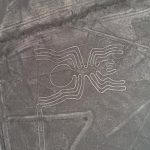Tomorrow the canonization of the martyrs of Damascus, three Maronite laymen murdered in 1860 along with eight Franciscan friars, will be celebrated in Rome. Syrian faithful will follow the ceremony at the Bab Touma church, where the martyrdom took place.
Beirut () – Tomorrow the universal Church will be enriched with 14 new saints, among them eleven martyrs: eight Franciscan religious and three Maronite laymen, the brothers Francis, Abdel Mohti and Raphaël Massabki, brutally murdered in Damascus on July 10, 1860 as direct consequence of his Christian religion.
The “Damascus massacres” occurred in a complex context. As a result of socioeconomic changes – explains historian Henri Laurens (1) – in the 19th century Christian communities grew strongly (…). Furthermore, thanks to the work of the missionaries, they had better access to modern education and therefore a qualitative advantage in the labor market. On the other hand, under the pressure of Western public opinion, they had become an indicator of modernity, and treating non-Muslim communities well was proof of a civilized political relationship with the population (…). Clashes between Druze and Christians became part of a confessional interpretation of the region. The massacres of 1860 were the result of the relative frustration of local Muslim groups against those who had supposedly benefited from the reforms, recent changes in the balance of power, and the intervention of external actors.
The explosion of sectarian violence began in Mount Lebanon and subsequently spread to Zahlé and Damascus. The Massabki were one of the great families of Damascus. Francesco, the eldest of the three brothers, was the head of the family. Married with eight children, he was a silk merchant whose large house was open to all and whose popularity extended even outside Syria. It is said that in the villages they would ring the bells when their mule caravan arrived.
When they learned that the rioters were approaching, the Massabki brothers took refuge in the nearby convent of Franciscan friars, believing they would be safe. But, guided by a traitor, the invaders broke into the courtyard of the convent through a secondary door. The attackers captured Francesco first. He had lent 8,000 piastres to Abdallah el-Halabi, one of the instigators of the violence. On behalf of his employer, they asked him to become a Muslim. He replied: “Sheikh Abdallah can keep my money. You can take my life. But no one can take my faith away. I cannot deny my God (…). I am a Christian.” He was massacred with daggers and axes. The fate of his brothers and the Franciscan friars was no better.
Almost 20 thousand Christians massacred
In 1860 they killed a total of about 20,000 Christians, of which 4 to 6,000 in Damascus between July 9 and 18, 1860. In the Syrian capital they destroyed eleven churches and three convents, and between 1,500 and 2,000 houses and 200 businesses were burned and reduced to piles of stones.
News of the Damascus massacres reached Paris on July 16, 1860, which ordered an expedition of 7,000 soldiers to restore order. To appease France and the European powers, Fouad Pacha, the Ottoman Foreign Minister, traveled to Syria. More than one hundred Ottoman officers and soldiers were shot for their part in the massacre. Governor Ahmed Pasha and 56 other officials were hanged.
The three Massabki brothers were beatified by the Catholic Church on October 10, 1926 along with the eight Franciscans (seven Spaniards and one Austrian). The Maronite Church celebrates them on July 10. On this day, the Greek Orthodox Church pays tribute to one of its priests, Youssef Mehanna Haddad, murdered in Damascus under the same circumstances.
Tomorrow the Syrian faithful will be able to follow the canonization ceremony from the Franciscan church of Bab Touma, where the altar on which some of these martyrs were beheaded is located. In a transparent urn under the altar you can see some skulls and bones that symbolically represent the relics of the martyrs of Damascus. The Maronite Synod asked the faithful to raise their prayers so that, through their intercession, peace may be restored in the Middle East.
1. Henry Laurens, Contemporary history of the Arab world












Add Comment